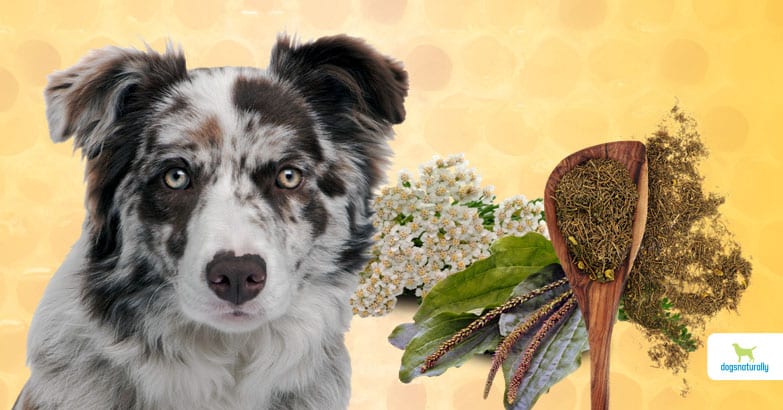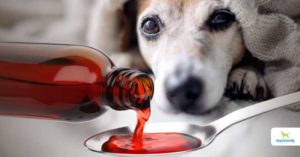How often do you walk out of the vet’s office with a bottle of antibiotics in your hand?
One of the most common reasons dogs are given antibiotics is skin issues like abscesses, bacterial and fungal infections. But antibiotics have a number of real drawbacks. Antibiotics kill not only the harmful bacteria, they also indiscriminately kill the good gut bacteria like lactobacillus, which are necessary to crowd out candida (yeast) and other harmful pathogens.
This is why dogs suffer skin issues so often after getting antibiotics. This is even true with topical antibiotics for dogs … they destroy the good bacteria on the skin and disrupt the skin microbiome.
Unfortunately, antibiotics are routinely given after dog bites, abscesses or surgery without any evidence of infection, “just in case.” And this is a problem because antibiotics will weaken, rather than strengthen, the immune system, setting your dog up for more serious problems later on. This is especially true if one antibiotic is given after another, or if they’re given long term.
Instead of risking the downside of antibiotics for those “just in case” scenarios, why not reach for natural antibiotics instead? There are many effective natural alternatives that will work with – and not against – the body’s own healing abilities.
Topical Antibiotics For Dogs
Here is a list of our five favorite natural, topical antibiotics for dogs. Why not try these natural, safe antibiotics first and save the antibiotics for the last resort?
Hypercal
Hypercal is a mixture of Calendula and Hypericum. Calendula has great antiseptic and anti-fungal properties, while Hypericum will help with healing and pain. You can buy this as a prepared cream if using it for small areas without much hair, or you can make your own spray by mixing the two tinctures in a spray bottle with sterile water. Dilute the tincture 1:10. Make sure to spray the mixture underneath the coat so it makes contact with the skin.
Hypercal also works great on open wounds, abrasions, cracked pads and burns (including sunburn).
Manuka Honey
Manuka honey hails from New Zealand and Australia, from the nectar of the manuka tree (tea tree). Manuka honey is an excellent topical antibiotic.
Medical researchers are showing an interest in the honey’s antiseptic properties because of the prevalence of antibiotic resistant super bugs. Researchers have found some honeys, especially manuka honey, effectively prevent the growth of MRSA, a nasty super bug that has invaded hospitals.
All honey has the antiseptic hydrogen peroxide, but it is very unstable, easily destroyed by catalaze, an enzyme found in human skin. But more than 20 years ago, a New Zealand biochemist discovered what the ancient Maoris had always known. After you take the hydrogen peroxide out of manuka honey, there remain additional phytochemical antibacterial factors that are powerful and stable and which years of research have failed to identify as anything other than “non-hydrogen peroxide activity.” This does occur in some other forms of honey, but is most powerful in manuka.
“Not only has it the potential to limit the growth of wound pathogens, but there is evidence that honey has the potential to promote healing,” says Rose Cooper, a microbiologist at the University of Wales Institute in Cardiff. “No other antimicrobial agent possesses these characteristics.”
Manuka honey shines as a topical antiseptic for cuts, wounds and abscesses. Its antibiotic, anti-fungal, and antiviral properties also make manuka honey an effective remedy for kennel cough, ringworm, and many other conditions.
Plantain
Studies have demonstrated that plantain is both antibacterial and anti-inflammatory. Plantain contains allantoin, an anti-inflammatory phytochemical that kills germs, speeds wound healing, and stimulates the growth of new skin cells (many commercial cosmetic creams and lotions list allantoin as an active ingredient).
Plantain can be used for insect and snake bites, rashes and cuts. It will not only help the wound to heal, it will reduce the itching.
You can make a lotion with plantain, calendula and coconut oil for any skin irritation, including mosquito bites, rashes and sores.
You can find this common weed almost anywhere. If your dog is injured while out on a walk, just look down for plantain, chew up the leaves and apply them to your dog’s wound!
Apply plantain tincture directly to your dog’s wound or prepare a tea from the dried leaves.
* Plantain tea or infusion can also be used in the ear for ear infections.
RELATED: Plantain has another super-power – check it out!
Goldenseal
Goldenseal is a natural antibiotic – it contains a chemical compound with antimicrobial properties called berberine. According to the University of Maryland Medical Center, berberine strengthens the immune system by encouraging the proliferation of healthy white blood cells.
You can apply goldenseal tincture topically to disinfect bites, cuts and grazes. Just dab a bit on a washcloth and apply it directly to the affected areas of the skin three times a day. You can also prepare your own goldenseal tea for topical applications.
Cautions – Goldenseal contains the compound berberine which can stimulate contractions, so goldenseal root should not be used in pregnant dogs. Goldenseal should not be used internally for extended periods of time in dogs with heart conditions either.
For infected ears, mix a tablespoon of olive oil with 2 to 3 drops of goldenseal root extract in a small cup. Tilt your dog’s head to the side and use an eyedropper to place 2 to 3 drops of the mixture in the ear.
RELATED: Read more about goldenseal for dogs …
Yarrow
Yarrow is a common weed that’s famous as a wound healer. You can use it for cuts and wounds, burns and ulcers as well as swollen, inflamed skin. Yarrow tincture not only heals wounds, it counters and prevents infection. Yarrow has been shown to be effective in killing all types of bacteria, including strep and staph.
Simply spray the tincture right on the affected skin or prepare a yarrow tea.
Preparing Herbal Teas and Spritzes
You can save money and make sure your herbs are of really good quality by preparing your own herbal teas! You can grow your own herbs or purchase them from a reputable, organic source such as Mountain Rose Herbs to use in your tea.
To prepare the tea, place 8 tablespoons fresh herb or 4 tablespoons dried herb in a teapot, then add a quart of boiling water. Allow it to steep for 20 minutes, strain out the herb and allow the water to cool.
Place the tea in a spray bottle and spritz it on your dog’s affected skin three to five times a day. Keep the remaining tea in the fridge, where it will keep for a few days.












